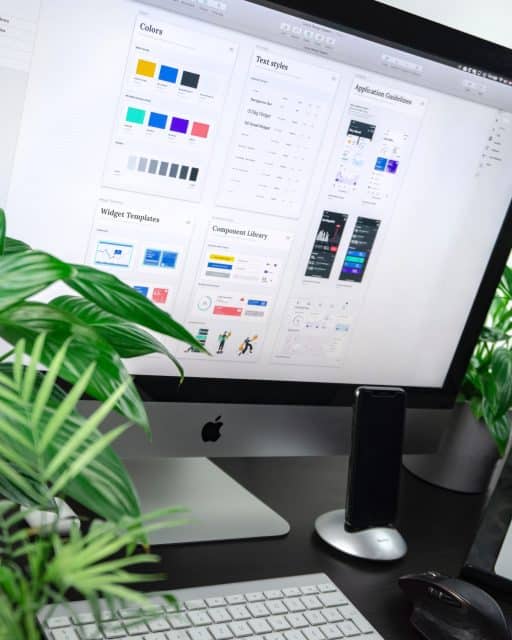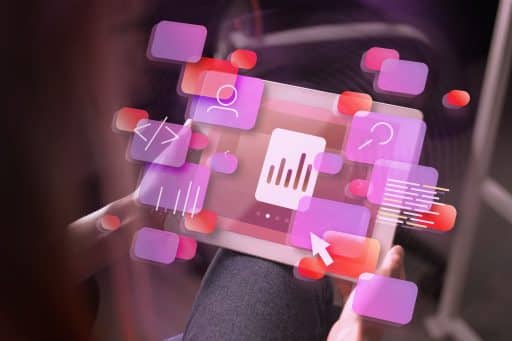In the fast-evolving landscape of web design, the integration of three-dimensional (3D) elements has emerged as a ground-breaking trend that brings a breath of fresh air to digital interfaces. The utilisation of 3D elements not only elevates the visual appeal of websites but also enhances user experience by adding depth and realism. In this blog, we delve into the captivating world of 3D web design, exploring its benefits, implementation techniques, and unique applications within the South African digital sphere.
Incorporating 3D elements into web design is like adding a new dimension to storytelling, where users become active participants in the narrative.
Unknown

The Evolution of 3D in Web Design
The history of web design has witnessed remarkable transformations, from the early days of text-heavy pages to the dynamic, multimedia-rich interfaces of today. The infusion of 3D elements marks a significant leap forward, turning static websites into interactive and immersive experiences. This transformation is driven by advancements in web technologies, including improved browser capabilities, better graphics rendering, and more powerful devices.
Benefits of Incorporating 3D Elements
1. Enhanced User Engagement: 3D elements capture users’ attention and encourage interaction. Elements like 3D images, animations, and interactive models create a memorable experience that keeps visitors engaged for longer periods.
2. Realism and Depth: By mimicking real-world objects and environments, 3D elements add depth and realism to digital interfaces. This realism facilitates better understanding of products or concepts presented on websites, as users can explore them from different angles.
3. Storytelling Opportunities: 3D elements allow for creative storytelling. Web designers can take users on a virtual journey, presenting narratives in an engaging and interactive manner.
4. Unique Brand Identity: Implementing 3D elements can help establish a distinct brand identity. South African businesses, for instance, can use locally inspired 3D visuals to resonate with their target audience and stand out from global competitors.
Implementation Techniques for 3D Elements
1. 3D Graphics and Images: Incorporating 3D graphics and images into web design requires the use of tools like WebGL, which enables rendering 3D graphics directly in web browsers. This technique is particularly effective for showcasing products in e-commerce sites.
2. CSS3 Transforms: Cascading Style Sheets (CSS) can be used to apply 3D transformations to HTML elements. This technique is employed to create subtle 3D effects like rotating cards or sliding panels.
3. 3D Animation: Animation breathes life into 3D elements. Through libraries like Three.js, web designers can bring motion and interactivity to 3D models, enhancing user engagement and conveying information more effectively.
Unique Applications in South African Web Design
1. Cultural Showcases: South Africa’s rich cultural heritage can be vividly represented using 3D elements. From interactive maps showcasing tribal regions to 3D representations of traditional crafts, web designers can celebrate the nation’s diversity.
2. Eco-Tourism Experiences: With its stunning landscapes and wildlife, South Africa can leverage 3D web design to create virtual eco-tourism experiences. Users can explore 3D-rendered national parks and wildlife reserves, promoting sustainable tourism.
3. Local Business Promotion: Small businesses in South Africa can utilise 3D elements to provide virtual storefronts, allowing users to explore shops and products online before making a purchase.
Challenges and Considerations
While 3D elements can revolutionise web design, they come with challenges. Page load times may be affected, requiring optimisation to ensure seamless performance. Additionally, compatibility with various devices and browsers must be addressed, to ensure a consistent experience for all users.

Key Take Away
Incorporating 3D elements into web design opens up a realm of possibilities for creating captivating and immersive digital interfaces. By enhancing user engagement, adding depth, and providing unique storytelling opportunities, 3D elements contribute to a more dynamic online landscape. South African businesses and designers have the chance to harness this trend to showcase their culture, promote local tourism, and elevate user experiences. As technology continues to advance, we can only anticipate more innovative ways in which 3D elements will shape the future of web design on the global stage.






